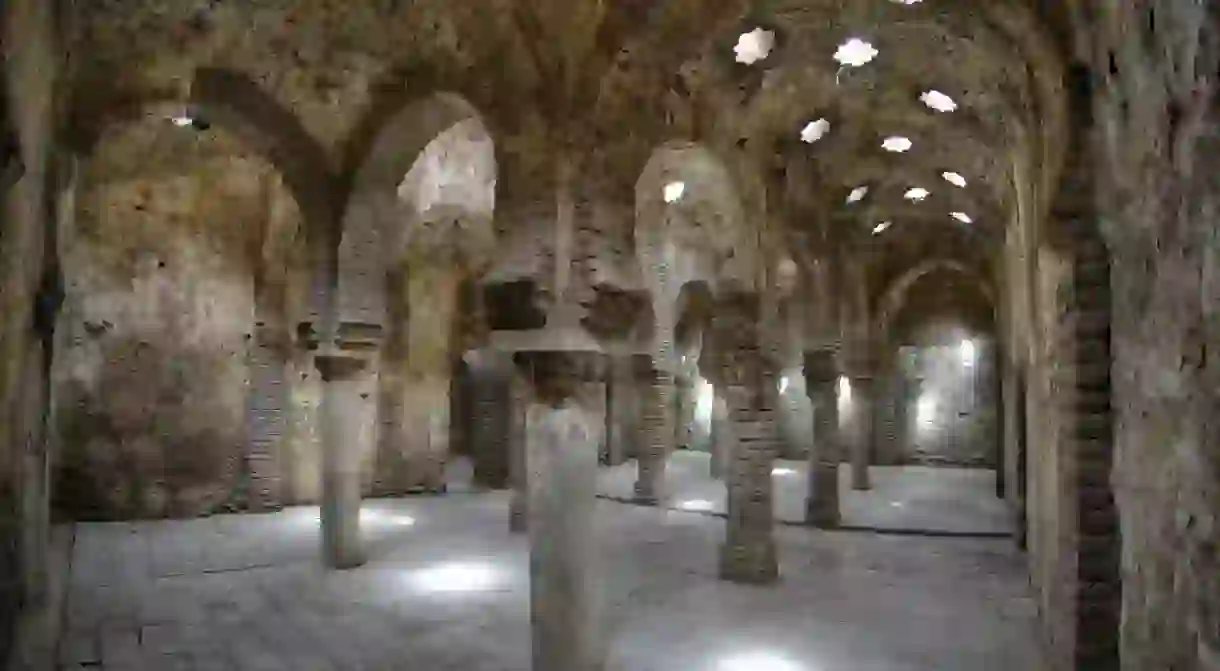The Most Beautiful Buildings in Ronda, Spain

Ronda is not lacking in beautiful buildings. From its jaw-dropping New Bridge, which spans a 120 metre-deep (394 ft) gorge, to one of Spain’s oldest bullrings, fans of architecture will find plenty to admire here. Read on for the most beautiful buildings in Ronda, Andalusia.
New Bridge
Bridge, Building
Although perhaps more of a “structure” than a “building”, it would be a crime not to mention Ronda’s breathtaking Puente Nuevo, or “New Bridge”, in this article. Completed in 1793 after nearly forty years of perilous construction – during which 50 workers fell to their deaths – it spans the 120-metre (394 foot) deep El Tajo gorge, linking Ronda’s old Moorish quarter with the newer part of town.
Old Bridge
Bridge

A little bit further south down the El Tajo canyon is the humble yet attractive Puento Viejo, or “Old Bridge” – one of the two crossings that the Puente Neuvo was built to improve upon. It was constructed in the early 17th century and consists of a single stone arch, beneath which the Guadalevin river cuts through El Tajo. The path to your left (if you’re facing the New Bridge) leads up into Ronda’s old Moorish quarter.
Bullring
Museum
Ronda’s elegant, neo-classical bullring was finished in 1785, making it the oldest plaza de toros still in use in Spain. It was designed by Martín de Aldehuela, the same architect responsible for Ronda’s Puente Nuevo, and every August it is the setting for the town’s famous Goyesca bullfight, in which Spain’s top toreros perform with the finest bulls. You can visit the bullring all year round, and there’s also a bullfighting museum inside.
Townhouses in Moorish Quarter
On the south side of Ronda’s Puente Nuevo, there’s an entire neighbourhood of beautiful buildings. This barrio is known simply as La Ciudad, or “The Town”, and dates from between the 9th and late 15th centuries, when Ronda was under Muslim rule. Its romantic, cobbled streets and stately townhouses are best appreciated as night falls, when most tourists are in the more commercial part of town on the other side of the gorge.

Palacio de Mondragón
Building, Museum

Located in the heart of the old town is the enchanting Mondragón palace, once home to Ronda’s Moorish rulers and now to the Municipal Museum. Dating from the early 14th century, it was drastically re-designed in the late 15th century by a wealthy Sevillano family, who were awarded the building for their role in the Catholic reconquest of Spain. Beautiful Moorish elements remain, though, such as the gardens and ground floor courtyard.
Arabic Baths
Situated outside the old city walls, Ronda’s Baños Arabes are the best-preserved such architectural relics in Spain. Dating from the 10th and 11th centuries, they consist of three rooms which would have maintained cold, medium and hot temperatures, while the star-shaped air vents in the ceiling formed a miniature cosmos over bathers’ heads. Today, they occasionally serve as the spectacular setting for classical music concerts.
House of the Moorish King
Building
The gracefully-ageing Casa del Rey Moro sits precipitously on the southern side of El Tajo, surveying the gorge and the spectacular scenery beyond Ronda. It is misleadingly named, as it dates from the 18th century rather than from the town’s Moorish epoch and, although the building itself is closed to the public, the stunning gardens are well worth a visit. From these, a 200-step staircase takes you down through the hillside to the bottom of the gorge.













